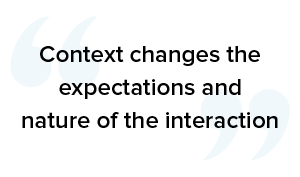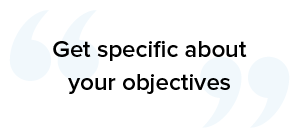This blog has been updated in June 2019
Positive customer engagement is a critical component of any call center operation. You may think that agents are working at an optimum and things are fine, but are they really?The only true way to know is to implement a Call Center Quality Assurance Scorecard to measure critical components. Call center QA monitoring scorecards provide the ideal dashboard arrangement of metrics to track, train and develop the assets that are most directly connected and responsible for customer experience, your inbound and multi-channel agents. They are also a rich source of data to help understand the root causes of poor service.
Building a Call Center QA Scorecard is not difficult; you already have the components, it’s just a matter of organizing and managing to deliverables. There is a process and we have some ideas to get you started on building a call center QA monitoring scorecard that will work for your organization.

Telephone is the main point of contact for many customers, but can also be a source of frustration. When the call centers are staffed with skilled and knowledgeable agents who have the ability to help customers effectively, you can create positive impression on customers.
However, the customers get frustrated if it takes more time than expected, phone interactions are typically more complex and come after self-service has been exhausted making the job of customer service more difficult. A call center QA monitoring scorecard helps uncover issues and prioritize what needs to be addressed to improve the phone call experience.
Email is channel preferred by an increasing number of customers. There are many advantages of email communication over phone.
However, the main issue arises when customers expect prompt response. Many people would prefer sending an email and wait for reply to avoid the hassle of calling.
However, email customer service often fails due to the volumes of mails and late response. It is estimated that 16% of customer support agents don’t respond at all, which is one reason to lose a customer.
Many companies are employing instant message service on websites to give customers an alternative contact option.
Similar to phone, customer questions are answered promptly and the problems are resolved in near real time. Maintaining high standards of service with multiple threads running simultaneously can be a challenge.
The use of social media for customer service offers great opportunities for brands to deal with the customer complaints proactively and show others that the company is listening to the customers and is likely to come up with a solution.
 Communicating with a customer effectively and in such a way that the customer leaves the engagement with a positive sentiment and feeling is vital.
Communicating with a customer effectively and in such a way that the customer leaves the engagement with a positive sentiment and feeling is vital.
The context of the issue and the channel will change the expectations and nature of the interaction. Skilled agents need to be able to assess and navigate a variety of different interactions.
That is why it’s crucial that call center and QA managers understand the Importance of using a call center QA scorecard. A call center QA monitoring scorecard is a useful tool to measure customer service and agent performance. Furthermore, it allows you to assess agents strengths and weaknesses objectively to see which areas require further development.
A call center scorecard is applicable to various aspects of the customer call and interaction with your brand and offers a useful view into how the interaction was handles.

The starting point in developing call center QA monitoring scorecards is by making two lists:
The lists will overlap but it is important to trap the key components that make the perfect call from the customers and the business perspective.
The framework below illustrates that as an interaction progresses the relative importance of its components changes depending on whether it is looked at from the customers or the business perspective. The QA scoring should combine to reflect these different goals.
.jpg?width=638&name=call-center-qa-min%20(1).jpg)
|
Customer Priorities
|
Business Priorities
|
Call centers have many shared aspects but your call center is unique and you will have components to measure that will vary from other centers.
Try to get specific about your  objectives. What KPIs are important? Do you need to alter agent or manager training? Are there corporate or business goals that you need to meet?
objectives. What KPIs are important? Do you need to alter agent or manager training? Are there corporate or business goals that you need to meet?
You’ll have a good idea of what’s working and what could use improvement which you can use as the basis for your QA Scorecard.
A call center works best when team members are included in decision making and planning.
Everyone who will be impacted by the new call center QA monitoring scorecards should be given the opportunity to provide input.
Agents have invaluable insights on processes, strategies and execution of the customer engagement process and their perspectives should be solicited. Plus, you will get better buy-in of new Scorecard methodologies if people feel that they are an important part of the design process.
Now that you have your objectives defined and gathered input from stakeholders, it’s time to start defining the QA Scorecard criteria.
Some components to consider include: agent problem solving abilities, protocol compliance, customer service quality, call center etiquette, script compliance and follow-up.
Obviously, you’ll want to design your QA Scorecard based on predetermined criteria and KPIs but don’t get carried away and make it too long or unwieldy. Anywhere from 10 to 20 questions is ideal.
If you have agents that answer all types of calls, you may want to consider creating a branching style form where certain areas are revealed based on customer responses.
In this way, agents will not have to worry about selecting the appropriate form to use. But, again, design based upon the needs and objectives of your call center to get the best results. As an overall guideline, the simpler your QA Scorecard, the quicker you’ll get to the answers you need without complicating the process

Before you unleash a newly-built QA Scorecard in your center, be sure to test it.
You should also plan to hold calibration sessions with the new QA Scorecard periodically so that everyone involved has the opportunity to identify areas that should be revised or updated for accuracy and effectiveness.
You’ll be capturing a large amount of data once your new monitoring scorecard has been launched so prepare for collection and analytics in advance.
When reviewing, prioritize information that will help you and your managers identify agent and center strengths and weaknesses in order to make needed course corrections as well as provide appropriate incentives.
Making the data available to all stakeholders will facilitate agent performance improvements and, ultimately, achieve call center quality monitoring objectives.
Be sure to incorporate the call center scorecard findings in feedback and coaching sessions to directly relate QA components to behaviors and performance.
Your call center has a huge impact on the company’s brand, making QA a critical component of your operation. Designing and using an effective QA Scorecard will go a long way towards meeting perception and customer loyalty goals. Designing and implementing a new call center scorecard is one of the best ways to achieve company goals while ensuring that agents and managers are working effectively and rewarded appropriately.